8 of the best cities and towns to visit in Peru, from Lima to Cusco
With a rich and ancient past steeped in Incan history, this South American nation combines natural marvels, exceptional cuisine and mesmerising landmarks
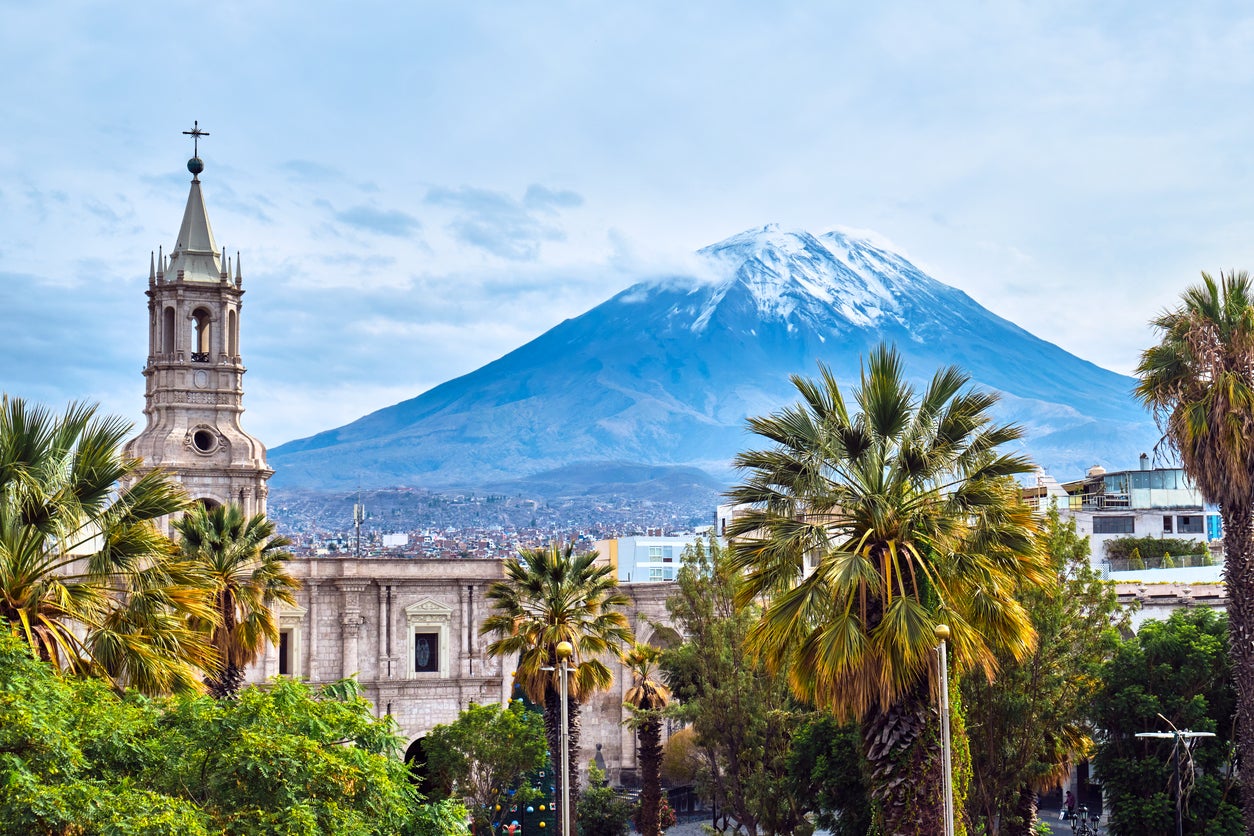
Like all countries in South America, Peru is a captivating destination, offering visitors an impressively rich blend of historic landmarks, colonial-era cities and awe-inspiring natural sites, from the riveting beauty of Machu Picchu to the lush landscapes of the Amazon.
Cities such as Arequipa and the sprawling capital, Lima, are the centre of artistic, cultural and culinary scenes that help Peru more than match its larger neighbours on the continent.
Much like Brazil or Colombia, Peru also benefits from an abundance of magnificent natural landscapes around towns like Puerto Maldonado and Chachapoyas, so there is even more beyond exceptional food and landmarks, whether that's trips to the Amazon rainforest, hikes in the Andes or sandboarding in the desert.
Peru’s size and the spread of its population means it requires some research to make the most of a trip here. To help you plan, here are the best cities and towns to visit during your holiday.
1. Lima
We recommend: Meander along the malecón, a smooth six-mile coastal path

Peru’s capital showcases a little bit of all the things that make the country a great destination. Starting on the Pacific coastline beside the Miraflores neighbourhood, the city spreads inland towards the historical centre, Lima Centro, where a slew of colonial buildings lead to the Plaza de Armas (these plazas served as the heart of New World cities, with all construction taking place in grids stemming from them).
Many visitors will choose to stay near the coast in Miraflores, where the malecon, Lima’s six-mile promenade, is the star of the show (along with beaches such as Costa Verde, where swimming, paddle boarding, surfing and even paragliding are popular). Alternatively, trendy Barranco is the city’s bohemian nightlife capital, while San Isidro has become a slightly more glitzy area and the safest neighbourhood.
Visitors can stroll through the Art Gallery of Lima and museums such as the Larco (which exhibits artefacts from ancient Peru), but this is a city where culture and history can easily be absorbed in the streets, plazas and parks. Aside from the architecture, nowhere is this more relevant than in the city’s culinary scene, where some of the world’s best restaurants like Maido (named the fifth top restaurant in the 2023 World’s 50 Best Restaurants ranking) sit alongside amazing street food stalls, all of which serve Peruvian and Creole specialities, including ceviche, chicken and chilli stew and barbecued beef heart.
Read more: 48 hours in Lima
2. Cusco
We recommend: Hike the Inca trail to see Macchu Picchu

Cusco is known as a gateway to Machu Picchu and is the centre of a region that contains a dazzling mix of ancient ruins, colonial architecture and natural beauty. The city is located high in the Andes, with an old town that is a picture-perfect sea of russet-roofed buildings that hide a wide array of museums, from the Museo Inka, dedicated to Incan history, to the Museo Machu Picchu, which showcases 360 artefacts taken from the original expeditions to the citadel.
The centre of the city is the Plaza de Armas, while its most notable site is the Qorikancha, once an Incan temple and now a church that features an eclectic blend of Incan and Christian architectural styles. Nevertheless, most who visit Cusco will use it as a base for exploring the Sacred Valley of the Incas and its archaeological sites, including Pisac (akin to a mini Machu Picchu) and Chinchero.
Machu Picchu can be reached via a journey to either Aguas Calientes or Ollantaytambo (with a 90-minute hike from the former and a two-hour train from the latter). Alternatively, take on the four-day Inca Trail for one of South America’s bucket-list travel experiences. This ancient route takes you across the river, valleys and mountains of the Andes in a winding, 24-mile trail.
Read more: How to do Macchu Picchu the sustainable way
3. Arequipa
We recommend: Book a tour of the Colca Canyon, which is twice as deep as the Grand Canyon

Peru’s second city is overlooked by snow-capped volcanoes and blessed with much of the finest colonial architecture in the country. The city centre is surrounded by areas filled with religious buildings, such as the Santa Catalina monastery or the cathedral, and beautiful white-washed streets.
For something thoroughly Peruvian, start at the Museo Santuario Indios, where you’ll discover the mummified remains of an Incan sacrifice; visit the cathedral’s museum or the Museum of Contemporary Art for something less unsettling. Break for lunch, or a souvenir, at San Camilo market, home to fresh produce, local handicrafts and street food (including traditional stuffed hot peppers and stir-fried salted beef). Continue on to neighbourhoods such as trendy San Lazaro, the oldest area of the city known for its buildings made from a volcanic stone called ashlar, or quieter Yanahuara, where there are several well-preserved colonial churches.
For the more adventurous, beyond hikes up the imposing Misti volcano, there’s the opportunity for trekking and climbing in the nearby Colca Canyon, the second-deepest canyon in the world.
4. Puerto Maldonado
We recommend: Watch macaws, parrots and parakeets in the Tambopata-Candamo National Reserve
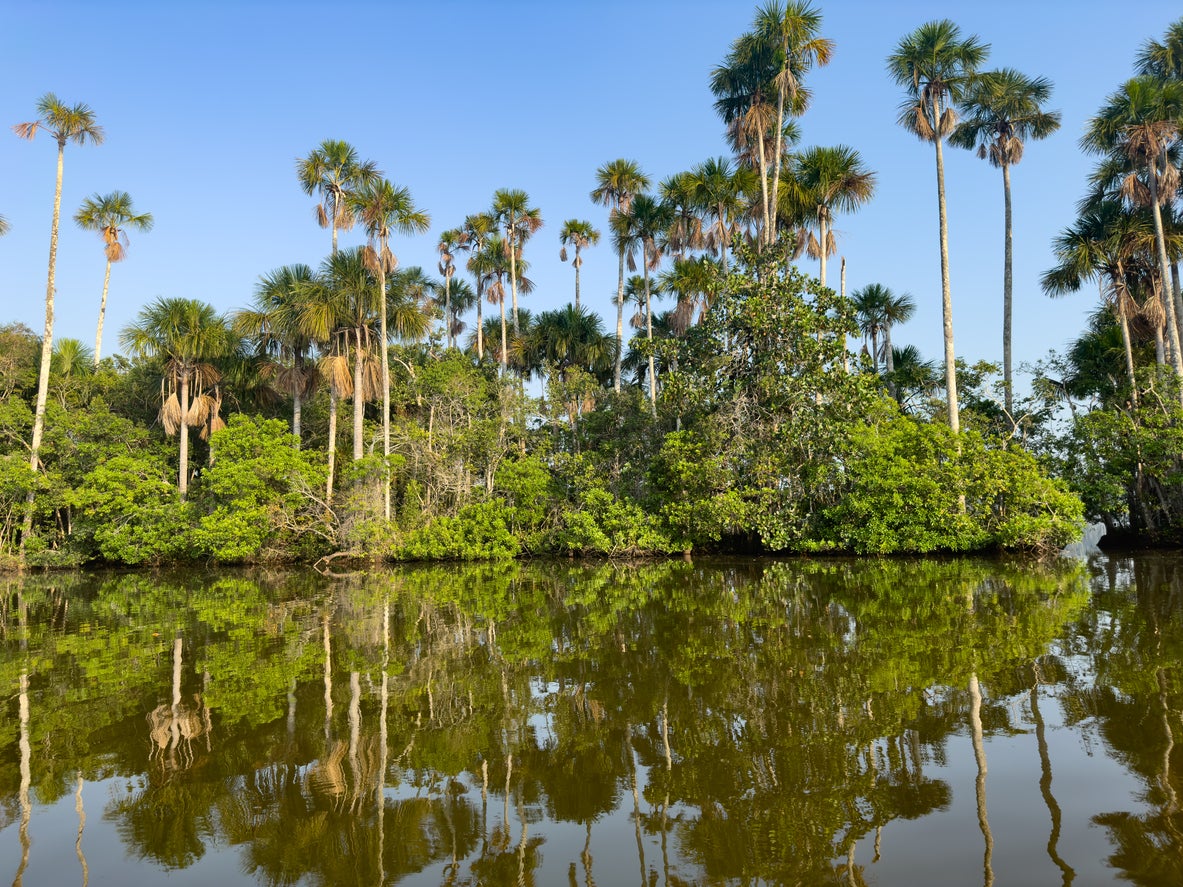
Puerto Maldonado is the gateway to the Peruvian Amazon. It sits deep in the jungle, surrounded by nature but still accessible from Cusco on a one-hour flight. The city has benefitted from increasing infrastructure to link it to the rest of the country, and it is now a true jungle city, surrounded by Amazonian hills and with low-rise buildings scattered among the dense greenery.
The Tambopata-Candamo National Reserve is home to hundreds of species of birds and insects; while inside the Manu Biosphere Reserve, you can find around 20,000 plant species. Alternatively, the Pampas de Heath National Sanctuary provides a different environment, consisting of vast plains and tropical wet grasslands that look like something out of the Serengeti, that’s home to rare animals, including jaguars, tapirs and maned wolves).
For those looking to explore further into the wilderness, many eco-lodges – such as Inkaterra Reserva or Posada Amazonas – offer accommodation as well as activities, including walking tours, boat trips and wildlife spotting.
Read more: The best countries to visit in South America
5. Ica
We recommend: Visit the Tacama vineyard and taste some Pisco
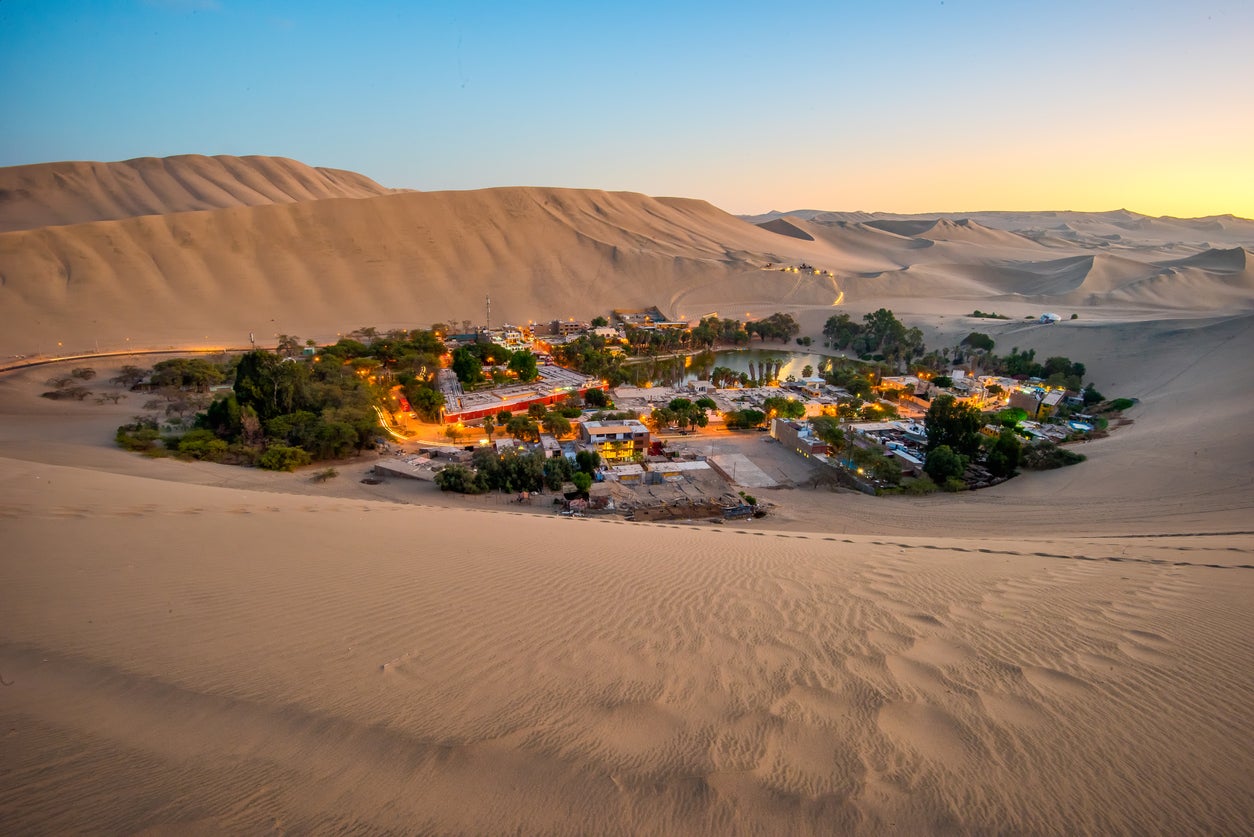
A city surrounded by towering sand dunes (some as high as 400m), Ica lies in the south of the country in the Atacama desert, around 30 miles from the Pacific coast. It is home to few notable attractions, though this part of the country is renowned for producing wine and pisco, Peru’s national spirit (made by distilling fermented grape juice), so there are several highly regarded vineyards, such as Tacama and Caravedo.
The area immediately surrounding Ica is an adventurer’s paradise. The only mountains you’ll find are those made of sand, so activities like dune buggying and dune boarding are popular, while further exploration of the desert takes the form of trekking through areas like the Lost Canyon, a two-kilometre canyon that was discovered as recently as 2011.
In the desert, just a few miles from Ica, lies Huacachina, an oasis village that appears so idyllic that you’d be forgiven for thinking it was a mirage. It’s a place to relax, where streets are lined with palm trees and contain dozens of bars, restaurants and places to swim, making it a popular destination with those wanting to blend desert tranquillity alongside high-adrenaline activities.
Read more: Reaching Colombia’s lost city of Ciudad Perdida
6. Chachapoyas
We recommend: See the hundreds of circular stone structures in the ruins of Kuelap
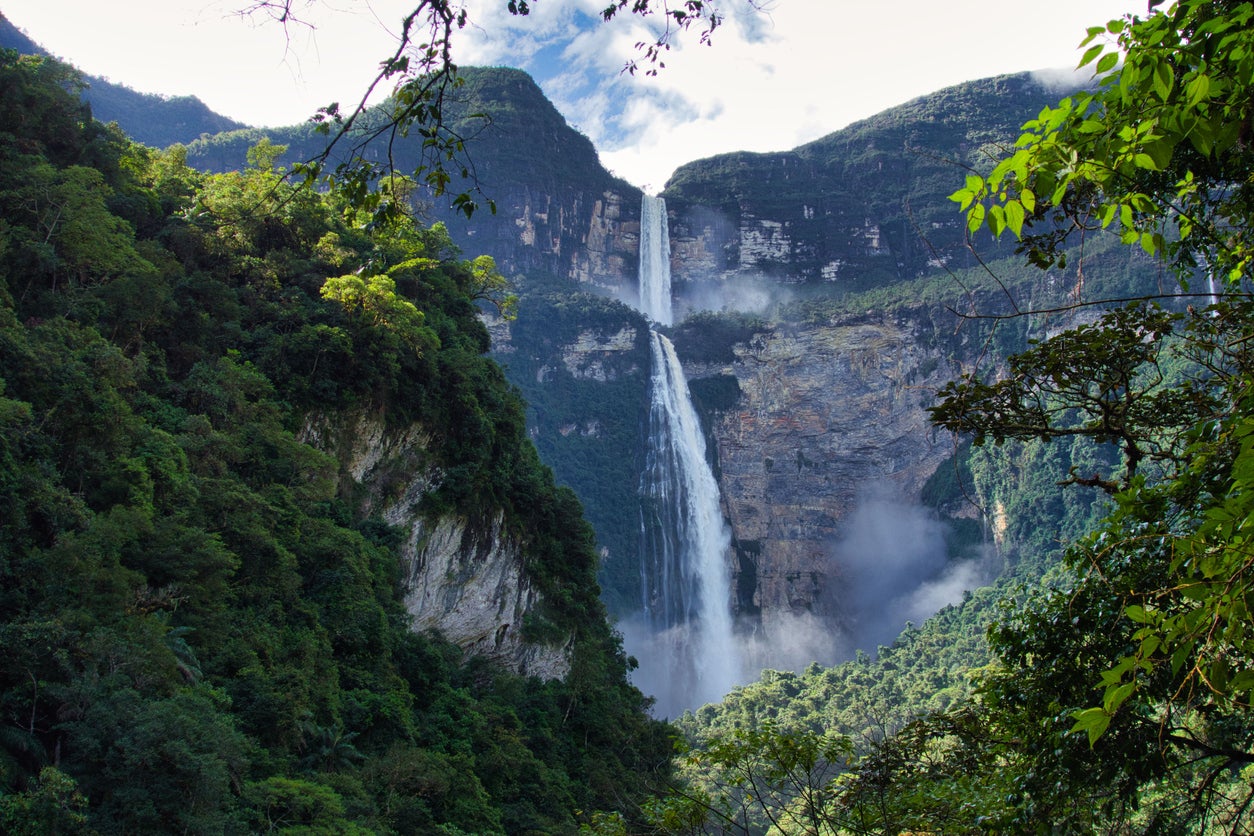
A region settled before even the Incans arrived, Chachapoyas was the centre for the civilisation of the same name. Translated from Quecha (one of Peru’s indigenous languages) as “cloud forest”, the name is said to derive from the natural landscapes around Chachapoyas, where a blanket of mist and cloud covers the slopes of the Andes.
The town can be reached by a 90-minute flight from Lima and is a charming base for exploring the surrounding area, with accommodation and restaurants cheaper than in tourist centres. The heart of town is unsurprisingly the Plaza de Armas, but walk to the Virgen de la Natividad viewpoint for panoramic views over the valley and the town below.
Chachapoyas is best known for being home to Kuelap, the ruins of a walled Chachapoyan citadel. Little is known about the civilisation, with the site filled with hundreds of circular stone structures spread throughout, but the views from 3,000m above sea level are amazing. The dramatic Gocta and Yumbilla waterfalls, as well as the Sonche Canyon, are popular natural attractions nearby.
Read more: Finding the ghost of Graham in ‘Greeneland’, the less-trodden fringe of Argentina
7. Oxapampa
We recommend: Take a hike to the El Tigre waterfall
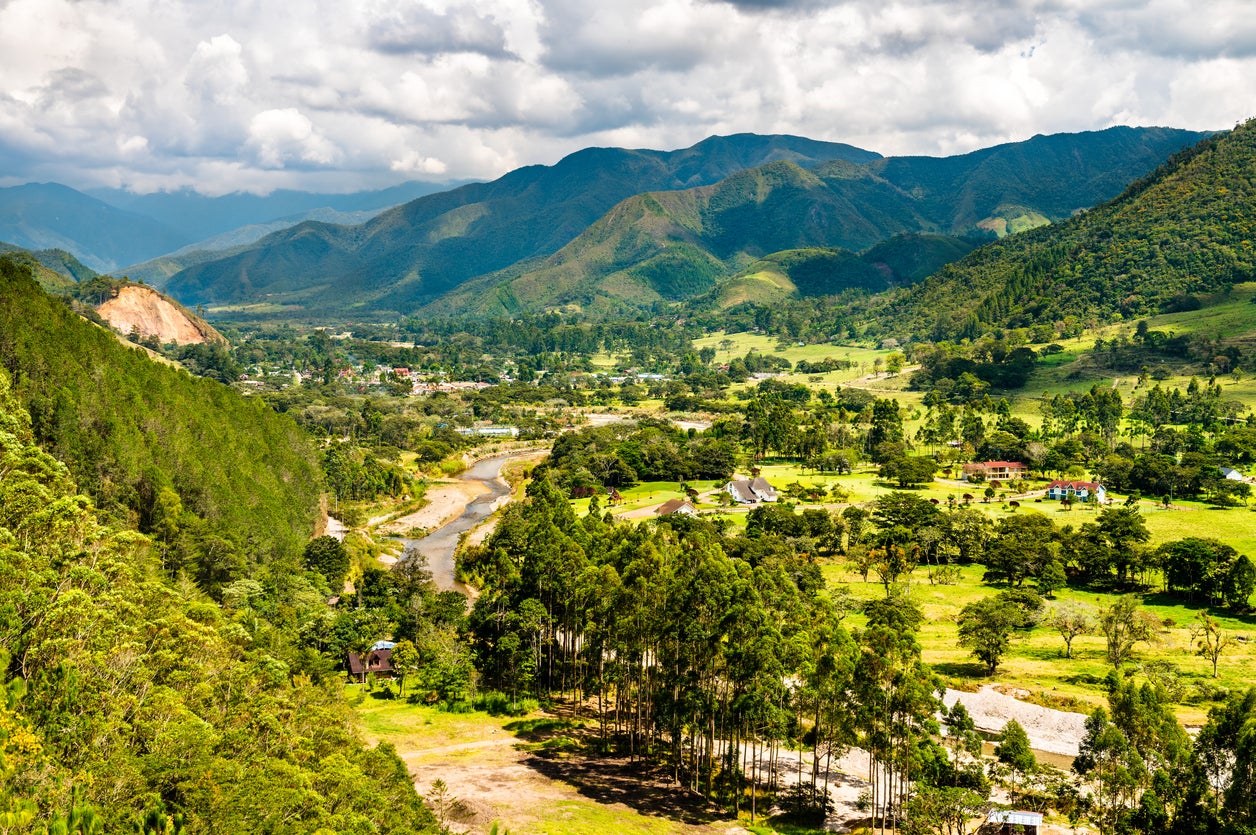
Oxapampa, a town in the Peruvian Amazon that was founded by Austrian and German settlers as recently as 1891, is a truly eclectic place. This is real ‘off-the-beaten-path’ Peru. The quickest way to reach it is via a 30-minute flight combined with a three-hour bus ride – it isn’t somewhere you just end up.
Architecture from the Tyrolean Alps lies among the mountains of the Andes and the jungle of the Amazon basin, with Alpine-style guest houses and plenty of opportunities for ecotourism, including exploring the nearby Tsho’llet forest or sitting by a waterfall while sampling the coffee of the Villa Rica.
Natural highlights include the El Tigre waterfall, where visitors can take a dip into the pool below, and the Yanachaga-Chemillén National Park, where full-day treks through the misty cloud forest are offered alongside hundreds of opportunities to spot rare wildlife, such as the spectacled bear. The highlight of the year in Oxapampa is Selvamonos, a week or so of cultural activities and music that takes place in June. Fifty miles away in Pozuzo, every September sees Pozuzofest, a local take on Oktoberfest that still provides the same beer and lederhosen that you’d expect.
Read more: How Brazil’s ‘ugly sister’ might actually be its Cinderella city
8. Puno

We recommend: Join the annual Fiesta de la Candelaria, a Unesco-recognised festival that’s one of Peru’s most spectacular events
Located on the shores of Lake Titicaca, Puno is a hub for visiting the unique islands that comprise South America’s largest freshwater lake. It’s also known for being the folkloric capital of Peru. Every February, hundreds of thousands of dancers and musicians don elaborate costumes and perform in a glorious blend of Catholic and indigenous beliefs. Eat tamales and sip chicha (a fermented corn drink) and watch processions of dancers, brass bands and fireworks. Festivities go on late into the night, making this colourful Unesco-recognised cultural event an experience you won’t forget in a hurry. It goes without saying that accommodation is booked up well in advance, so don’t leave it until the last minute to sort your bed and board.
Outside of festival season, discover the art of textile weaving on Taquile Island or take a private tour of the remarkable floating islands of Uros, which consist entirely of torora reeds. Take a 40-minute drive to the mysterious Sillustani archaeological complex, an ancient pre-Inca burial site, with panoramic views over Lake Umayo. Last but not least, bring your sol to pick up textiles, ceramics and reed crafts from local artisans at the markets.
Read more: Seven of the coolest cultural festivals in Europe, from tomato fights to chasing cheese
Join our commenting forum
Join thought-provoking conversations, follow other Independent readers and see their replies
Comments
Bookmark popover
Removed from bookmarks